Hats Make the Perfect Garment Swatch, Especially Colourwork!
Sweaters are such a wonderful knitting project. They require time and patience, and throughout the winter months, they become the way we face the cold and the way we present ourselves to others day in and day out. Sweaters are also a great way to wrap up knit-worthy people in our lives with love.
For non-knitters, when they admire a hand-knit sweater and you casually mention, “I knit it myself,” you’ll often receive a shocked response as they wonder how you managed it and how long it took you to knit it.
Knitting a sweater is truly a labour of love; it may take us a season or even a whole year to get them done. When we get caught up in the excitement of getting started knitting our next project, many times thinking about “wasting” time on swatching, entices us to skip this fundamental step and start the sweater with our best guess. But wait! Taking the time to swatch will likely save you from having to knit the sweater twice—once when you impulsively start, grabbing the suggested needles and yarn without a second thought, and again after you’ve knit 8-12” / 20-30 cm, thousand of stitches, and realize the sweater will fit someone with a different body size than the recipient you intended.
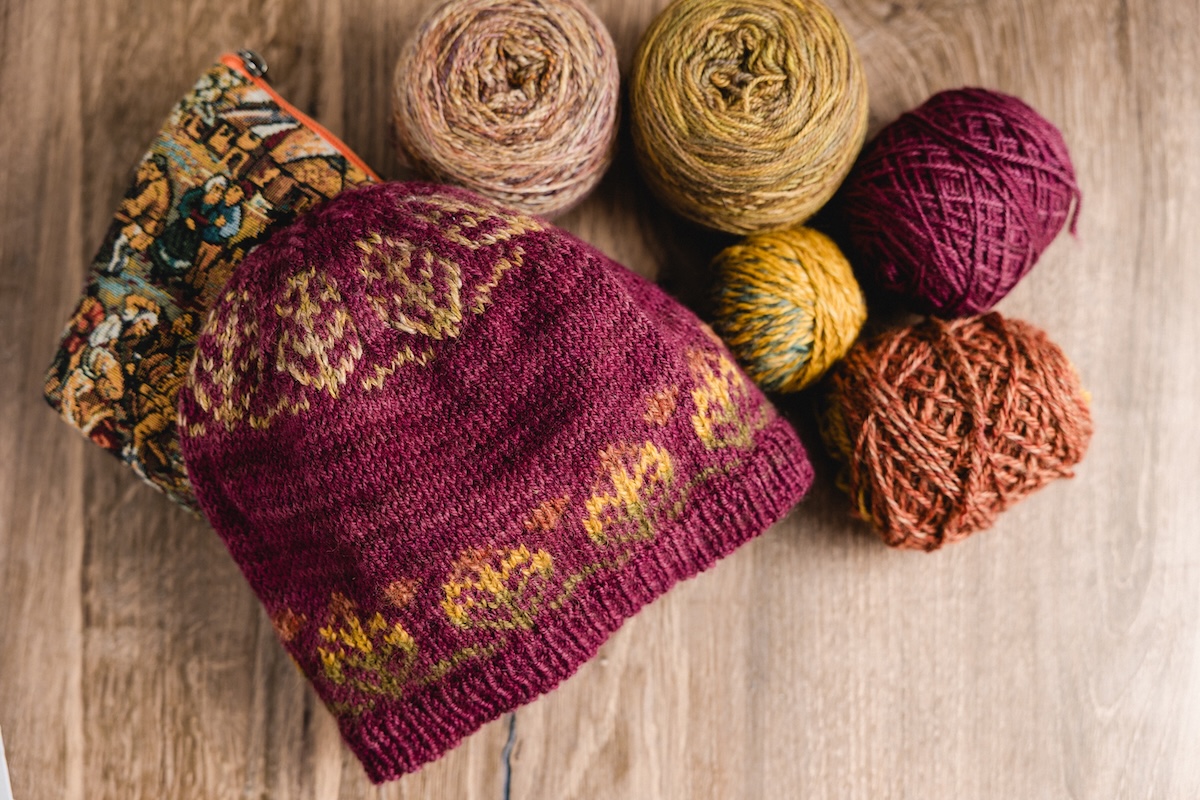
Why We Love It
This is where knitting a hat as a garment swatch, instead of a plain old swatch, can make the difference in having the final sweater you envisioned, plus a hat to match!
Gauge
Many times, when we’re swatching for a project, we try to get away with the smallest possible swatch. The problem with this approach is that your knitting tension may not be the same on a small swatch as it is on a larger piece. Knitting a hat allows your tension to settle in, better simulating the conditions of knitting an entire sweater.
To test the gauge in the pattern, use the needles and yarn you plan to use for your sweater project. You can knit a hat either in the round or flat, allowing you to practice every technique you’ll use in the pattern.
Practicing your sweater pattern with the needles you intend to use will also confirm if you chose the right needles for the yarn you are using. If you realize your needles are too big or too small, and your in-progress gauge is way off from what you need, it’s easy enough to swap the needles and keep knitting with another size of needles. I like to add a few purl stitches to mark the place where I swapped needles.
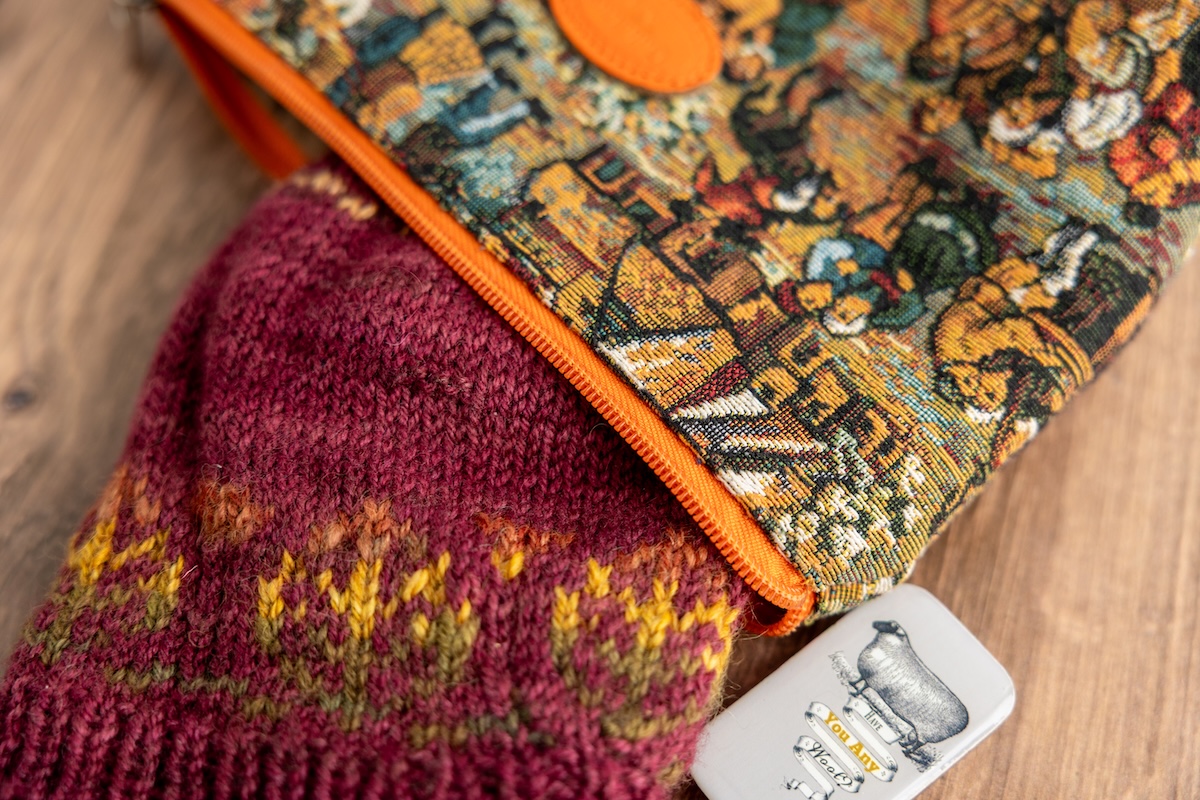
The purl bumps blend into the fabric, but are easy to find when checking the gauge. You could also unravel the yarn to the ribbing and restart the hat with the next needles you want to try. If you think this is what you would do, you could add a lifeline on the first knitting row after the ribbing.
Alterations
If the pattern suggests a cast on you haven’t tried before, such as a tubular cast on, a hat is a great place to try out a new technique.
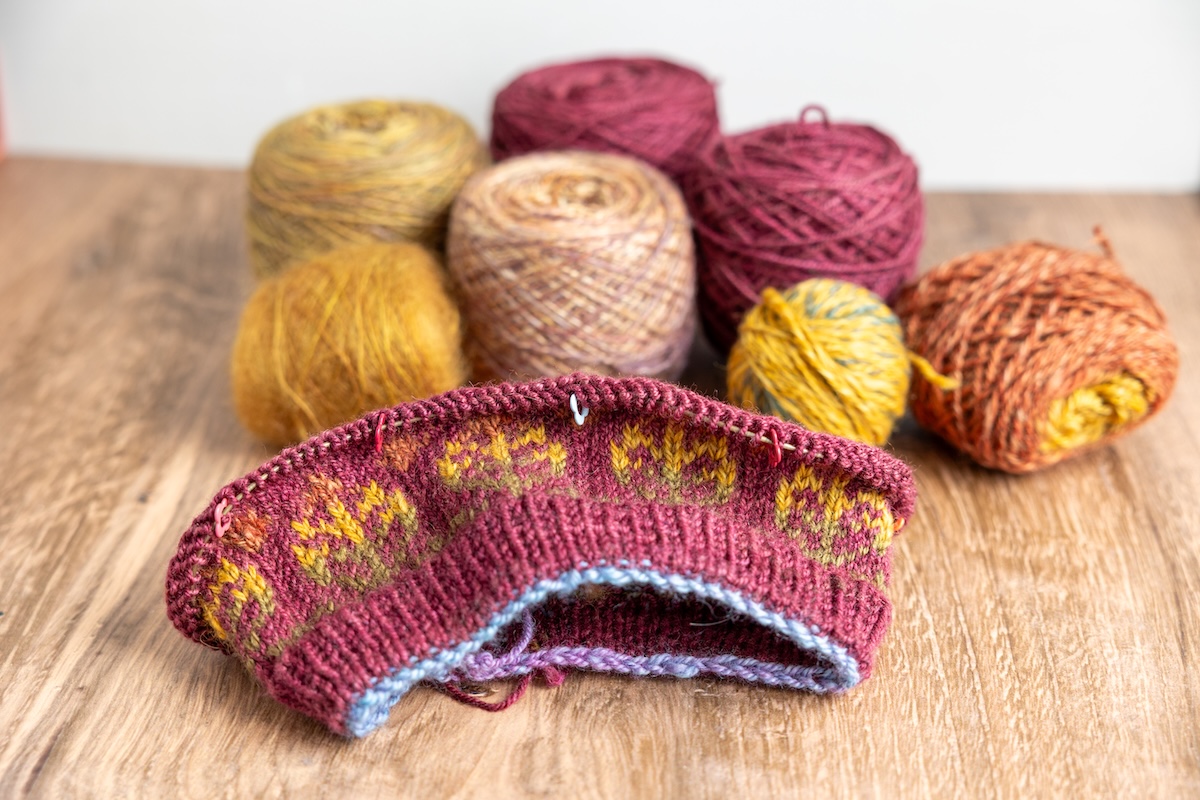
If halfway through the hat swatch, you realize you don’t like the fabric, colour option, or needles, the hat becomes the canvas for all the changes you make. Even if you decide to rip back, it is less painful to restart the hat as it is less onerous than starting over a full sweater.
Colourwork
If you’re using contrasting colours in your sweater, the hat swatch will allow you to confirm whether your colours have enough contrast of value with the main colour for the effect you want. You may realize you need to swap one of the colours to achieve your intended look.
If you’re planning a colourwork sweater like the Falling Leaves Sweater or the O’Deery Me Sweater, you can practice some of the colourwork in the yoke on your hat. Some knitters, when switching from stockinette to colourwork, may need to use a needle one or two sizes larger for the colourwork section. Redoing 100–120 stitches of a colourwork chart is much faster than redoing three times as many stitches on a sweater.
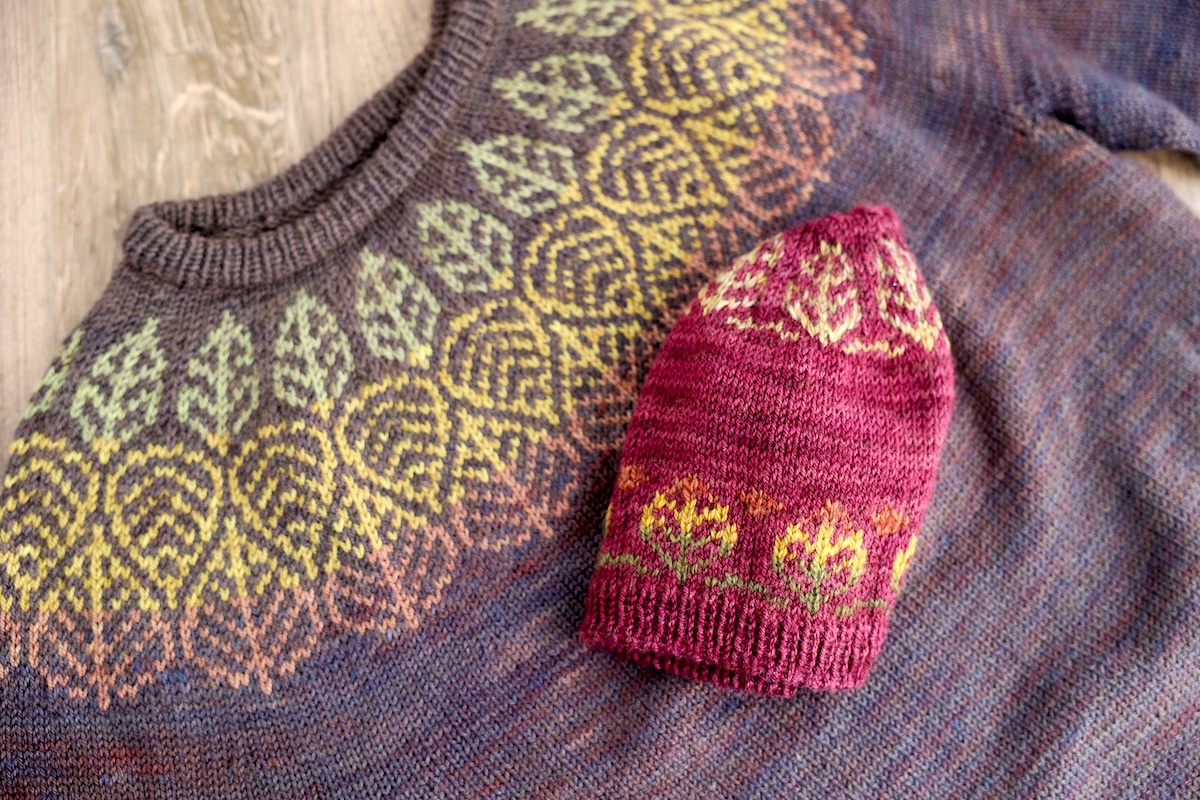
Using a Hat as a Swatch
Before You Get Started
As you may be changing needles in different parts of your hat as a swatch, I recommend you make a simple diagram in your knitting notebook, so you can add notes on the changes you did, and when you made them, otherwise you may have a hard time keeping track of all the changes you made while knitting your hat swatch. The notes on your schematic will help you make the best decisions for your future sweater.
Considerations
- Know your target gauge. This will give you a starting point to fine-tune your stitch count.
- Measure your head. You need to find the circumference of your head, then subtract around 10%. Hats have negative ease, which gives us the snug fit we want.
- Understand the stitch repeat (if knitting colourwork or a textured pattern). Certain patterns repeat over a specific number of stitches. This needs to be calculated into your hat stitches.
- Remember your rib pattern. Make sure your ribbing works into the cast-on amount (a 2×2 ribbing means the hat stitches need to be divisible by 4 to work), or alter the stitches by increasing or decreasing in the first row after the ribbing.
- Try different needle sizes. While knitting the hat, change your needles to test different gauges. Add 4-5 purl stitches on the row where you switch needles; this will make it easy to find later to check the gauge and make sure to record this on your schematic for future projects.
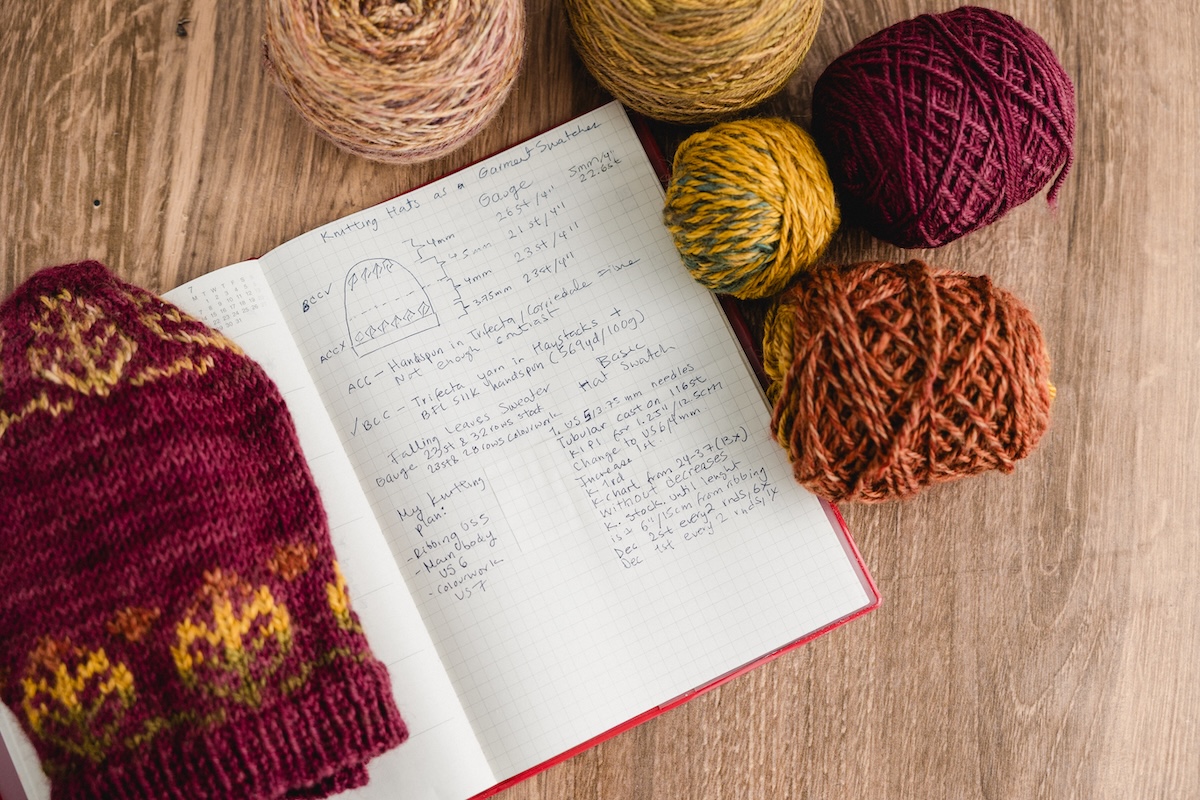
I recommend you finish the hat, take gauge measurements, and finish it as you intend to block your sweater. Once it’s dry, take gauge measurements again and add them to your notebook. Now you should have all the information you need to know to start your sweater with confidence.
If your first hat swatch didn’t give you the fabric you want for your sweater, you may need to do a second hat swatch. These hats can also be used a gifts, maybe even to yourself.
Final Thoughts
I hope you give knitting a hat as a swatch a try. If you want to learn more about gauge, we have the Mastering Gauge course with Tabetha Hedrick and if you want to learn more about design, the Design Stranded Colourwork: Hats course with Andrea Rangel is a fabulous introduction.
The post Hats Make the Perfect Garment Swatch, Especially Colourwork! appeared first on SweetGeorgia Yarns.
Comments
Post a Comment